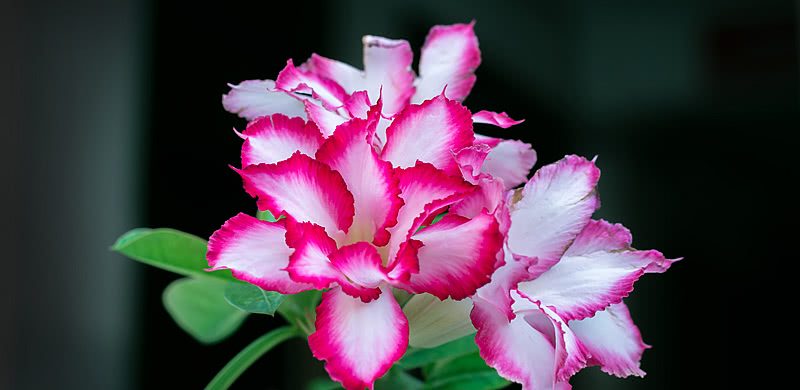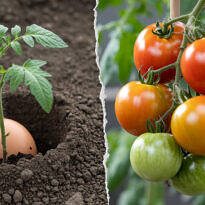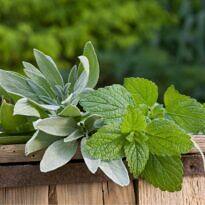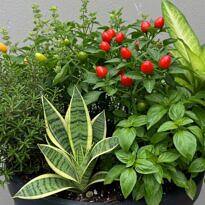They have won the hearts of gardeners, and every day, more and more passionate collectors are popping up from east to west of the planet. Desert roses are truly wonderful! Easy to cultivate, rugged, and with abundant blooms, each new cultivar arouses the burning desire of gardening enthusiasts. But with so many new enthusiasts of the desert rose hobby, many mistakes are also made that harm the plant’s health and flowering. However, from this article, you will be vaccinated against the main mistakes beginners make, and you can breathe easy that you are doing the best for your plants.

1. Lack of Sunlight
It’s very common when acquiring a blooming desert rose to try to keep it indoors. After all, we want to enjoy its flowers, and it doesn’t look much like garden plants. However, this is a serious mistake. The desert rose is a full-sun plant and requires at least 4 hours of direct sunlight daily to thrive. Ideally, it should receive sunlight throughout the day for the most abundant blooms.
In large-scale commercial cultivation, nursery workers usually grow them under filtered light to promote foliage growth. Thus, when we bring our plants home, it’s important to gradually adapt them so that the plants become accustomed to sunlight. Many plants will shed their juvenile leaves, which is a normal process, as they need new leaves adapted to full sun conditions. Therefore, do not place your desert roses indoors, near the window, or in a cold and dark hallway. These light conditions are insufficient and will lead to the plant’s decline and weakening, causing growth stagnation and a lack of flowering.
2. Insufficient Watering
Desert roses are indeed succulents, and for this reason, many people believe they should receive very little water. But what many don’t know is that even succulents need a fair amount of water. The difference lies in the frequency. While most plants prefer consistently moist soil, desert roses prefer their soil to dry out between waterings. So, when watering your desert roses (and other succulents), water generously. Fully saturate the soil with an abundant amount of water, allowing it to drain through the drainage holes. This type of watering ensures that water reaches all parts of the soil and eliminates excess salts from the water itself and from fertilizers, which tend to accumulate in the pot. Remember that desert roses store a lot of water in their chubby caudex, and for this, they need to be properly watered.
3. Excessive Watering
Just as insufficient watering is common, so is excessive watering. This is usually a mistake of gardeners who are very attentive to their plants and water their garden and plants daily out of fear of dehydration. But this innocent mistake can be fatal. If we don’t allow the soil to dry out between waterings, our desert roses won’t flower and will only have leaf growth stimulated. What’s worse, if the soil remains constantly moist, we’re promoting the development of fungal and bacterial diseases, leading to the rotting of the caudex and potential death of the plant. Remember, excessive watering is more related to a too-frequent watering schedule that doesn’t allow the plant to dry out between waterings, rather than the amount of water used. Water your desert rose, but allow it to dry between waterings. To do this, if necessary, check the soil, not just the surface. Dig and examine the deeper layers. If it’s still moist, wait a bit longer.
4. Inadequate or No Fertilization
Many people believe in nature providing all a plant needs to survive and think fertilization isn’t necessary. However, they forget that their plants are in pots, in a very different environment from what’s natural for the plant. In their natural habitat, desert roses can extend their roots into deeper layers of soil to seek nutrients and water over a wide area. Nature does provide, renewing nutrients with dead leaves, animal waste, and a host of organic residues that can decompose and return to the soil. But in the confined environment of a pot, it’s our responsibility to feed the plants, to add the nutrients they need from time to time, so that our plants grow healthy and bloom abundantly. So, remember to get good fertilizers and follow a regular fertilization schedule so that your plants never lack the nutrients they need.
5. Excessive Fertilization
Excessive zeal can also manifest in the form of fertilization. In the eagerness to see healthy and blooming plants, many novice gardeners overdose on fertilizer, applying too much. Sometimes they even create a veritable cocktail with various types. However, excessive fertilization can bring several problems. Apart from the plants being unable to absorb such a load, the imbalance caused can attract pests and diseases. Excessive nitrogen, a nutrient present in chemical and natural fertilizers, stimulates foliage growth, attracting aphids and reducing flowering, for example. Excessive organic fertilization, such as the indiscriminate use of manure and compost, can degrade the substrate, making it pasty and causing poor drainage. Additionally, excessive fertilizers lead to substrate salinization, as well as leaf and root burns, which can be fatal.
6. Wrong Choice of Substrate
Many times, due to not knowing the species’ specific requirements, we create unsuitable substrates for our Adeniums. It’s not uncommon to see plants being grown in excessively humus-rich or organic-rich substrates, or worse, in clay soil taken from the yard. While these materials might have little effect on other plants, they can be fatal for our desert roses. They hinder drainage and suffocate the plant’s roots, impeding their respiration. The result is a softened caudex, stunted growth, and reduced flowering. Always remember to use substrates specifically designed for desert roses or, in their absence, mix materials that enhance drainage and root aeration. Materials like chopped charcoal, sand, perlite, carbonized rice husk, coconut husk, or composted pine bark are interesting options to include in the mix to improve the substrate’s physical characteristics. You can find more substrate tips in the e-book Cultivation Manual: Desert Rose.
7. Inadequate Pots
When planting desert roses in pots, it’s important to consider that the pots should be proportional to the size of the plants. Many people, hoping for quick plant growth, use oversized pots for their seedlings. However, this is a mistake that can have the opposite effect. Maintain proportionality. As succulents, it’s ideal for the substrate to dry out quickly between waterings, allowing excess water to drain. Therefore, the chosen pots should preferably be shallower rather than deeper, and their width should be suitable to accommodate the growing caudex. They should be well-drained with ample holes to facilitate water drainage from watering.
8. Failure to Prune
Novice gardeners often fear pruning their plants, thinking that it will delay their growth. Others advocate for the idea of having plants as natural as possible, without any pruning. However, pruning plays an important role in the development of desert roses. Pruning encourages caudex thickening, the growth of more branches, and more abundant flowering. Moreover, pruned plants have a denser appearance, resembling a miniature baobab, which highlights the caudex. Plants without pruning develop elongated and sparse branches, resulting in a weak appearance. They usually bloom in fewer numbers, with just a few flowers at the tips of the long branches. Don’t be afraid to prune your desert roses; they become more beautiful and graceful after well-executed pruning.
9. Pruning at the Wrong Time
It’s quite common for beginners in cultivation, excited about their new plants, to want to perform all the maintenance tasks at once and put their newly acquired knowledge into practice. However, in the attempt to enhance their plants’ quality, they run the risk of harming them. So, before you start pruning your plants, consider the appropriate time for this task. If you live in the monsoon climate region, avoid the rainy season, which could promote infections in the plants. For those in the southern region, it’s best to avoid winter when the plants’ growth is stagnated. Never prune dormant plants and avoid pruning during the waning moon phase. Prefer the waxing or full moon, as this stimulates sap circulation in new shoots. It’s also a good idea to wait until the end of the flowering period to begin pruning.
10. Failure to Repot
Like all potted plants, desert roses also require regular repotting. Don’t let more than 18 months pass without repotting. Even better, mark your calendar for annual repotting of your plants. Repotting not only renews the substrate but also provides an ideal opportunity to lift the plant’s caudex. Additionally, it’s a chance for a thorough inspection of the roots, which could be infested with scale insects or other pests.
11. Neglecting Inspection
A desert rose enthusiast can only truly be called so when they regularly examine their plants. Buying expensive plants for the sake of consumption and exhibitionism doesn’t make one a true gardener. Regularly examine your plants in detail. Squeeze the caudex of each plant, looking for wilting and other problems. Invest in a magnifying glass to inspect the leaves and always stay vigilant. Identifying issues early on is much better than addressing them after they’ve taken root. Pests like mites and aphids usually start discreetly, as do spots and other problems. Catching them early gives you the chance to turn the situation around quickly, avoiding significant losses.
Happy cultivation!






